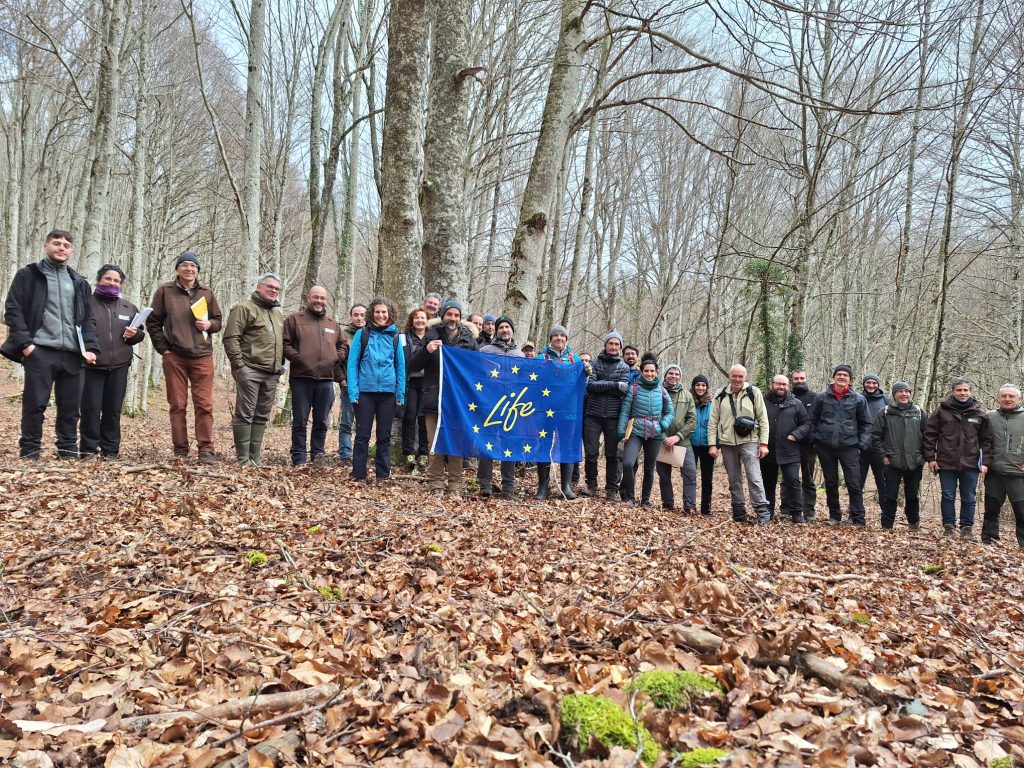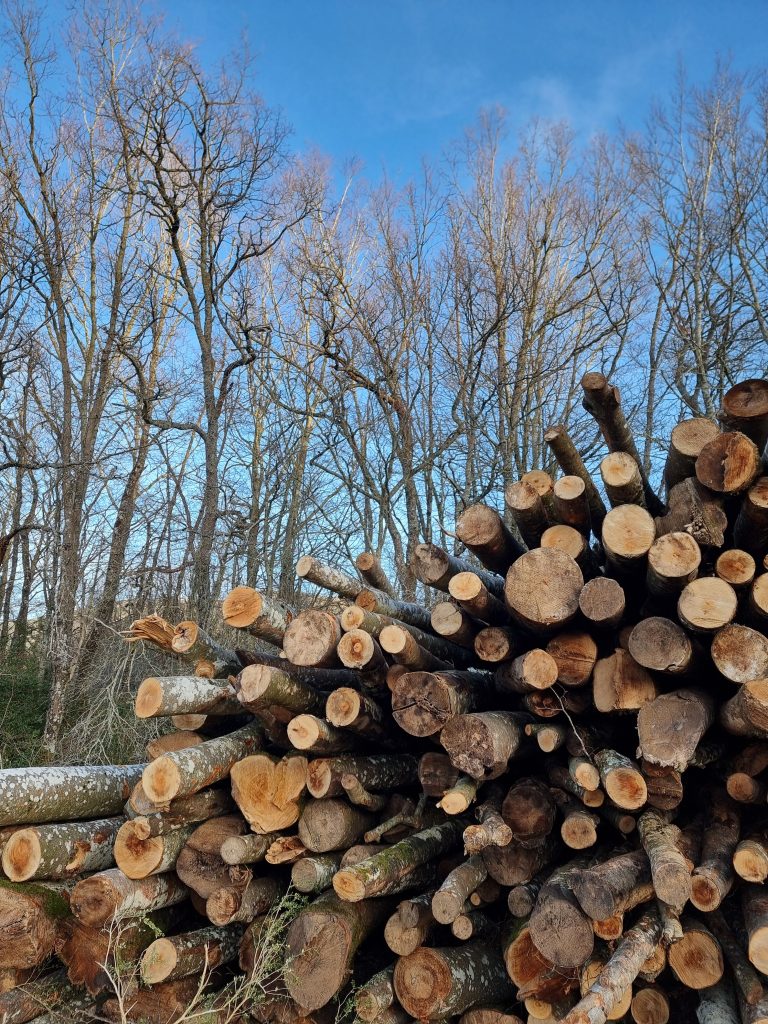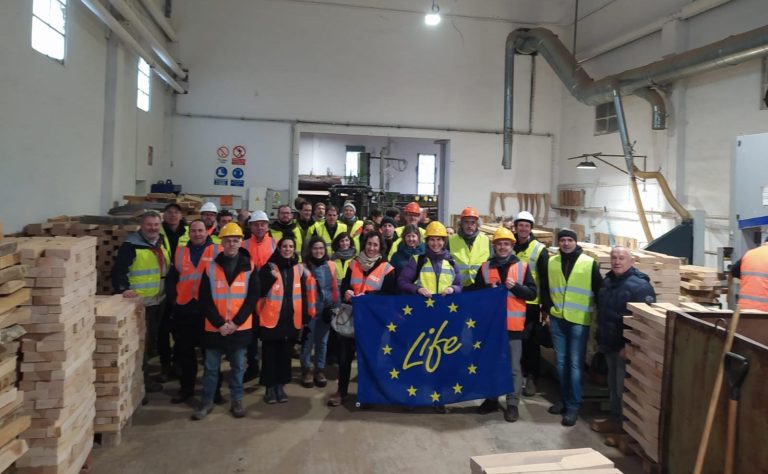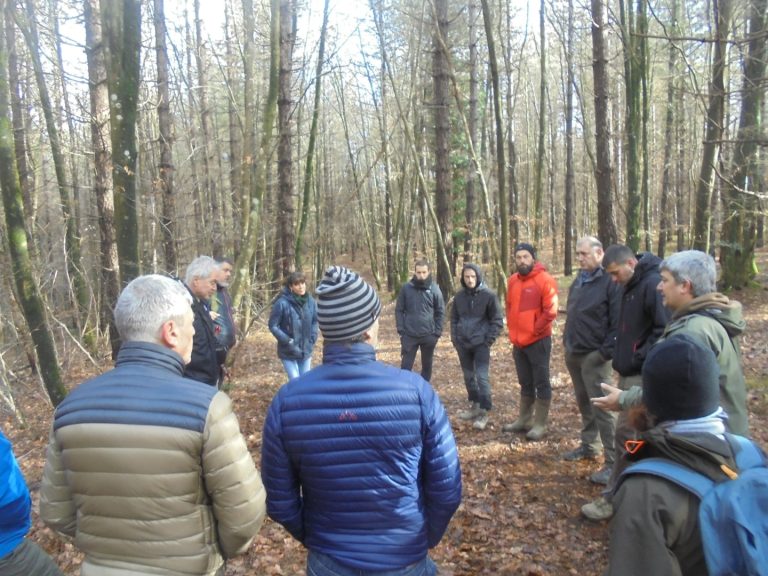The partners of the Life Haya “Hardwood For The Home” project held their 1st expert committee meeting in the town of Lagrán in Alava on 12 March.
The aim of this committee is to gather the knowledge of professionals in the sector and to create a forum for debate on close-to-nature forestry in beech forests, beech wood products, and to learn about the opportunities and problems of this type of tree.
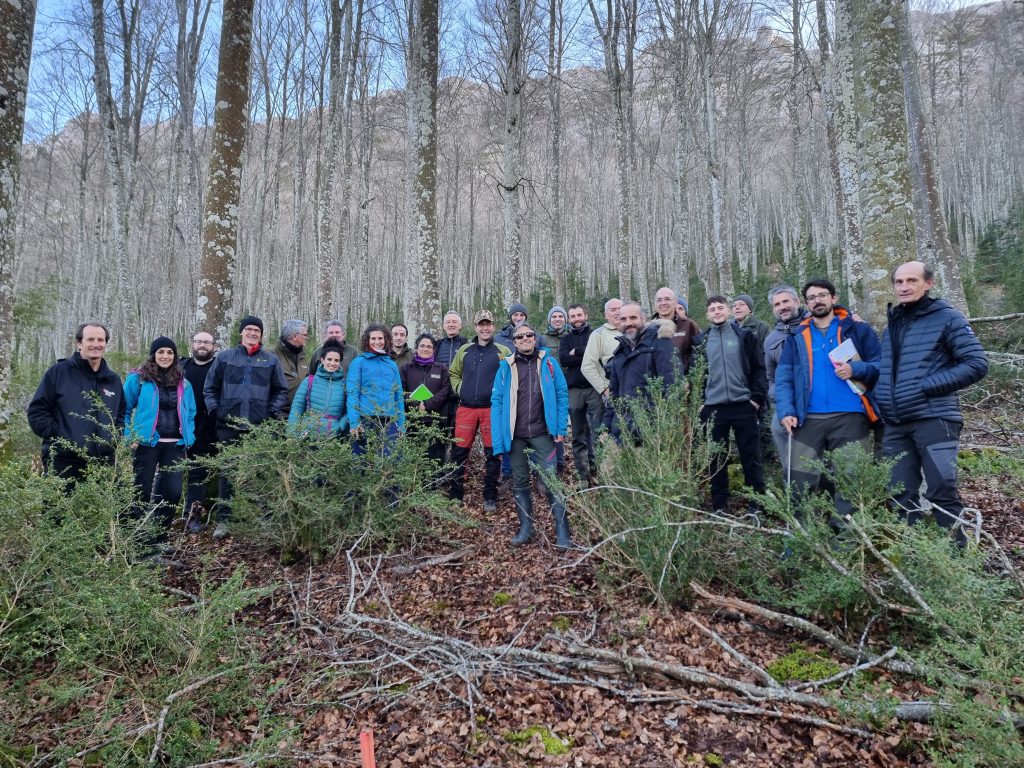
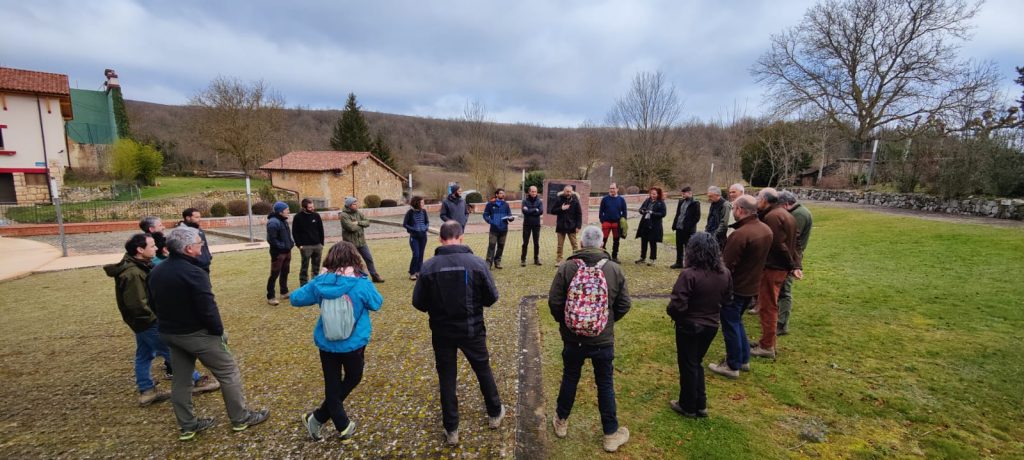

The meeting served as a synthesis to improve the existing knowledge of beech forests for the thirty or so experts in forest management, forestry, biodiversity and climate change who attended.
During the day, the attendees visited different stands in the area to get to know the beech forests first hand. Specifically, they visited stands in the Sierras Meridionales de Álava and the GOFAGUS plots, for the revaluation of beech trees through innovation and the improvement of the competitiveness of its forest-industry value chain.
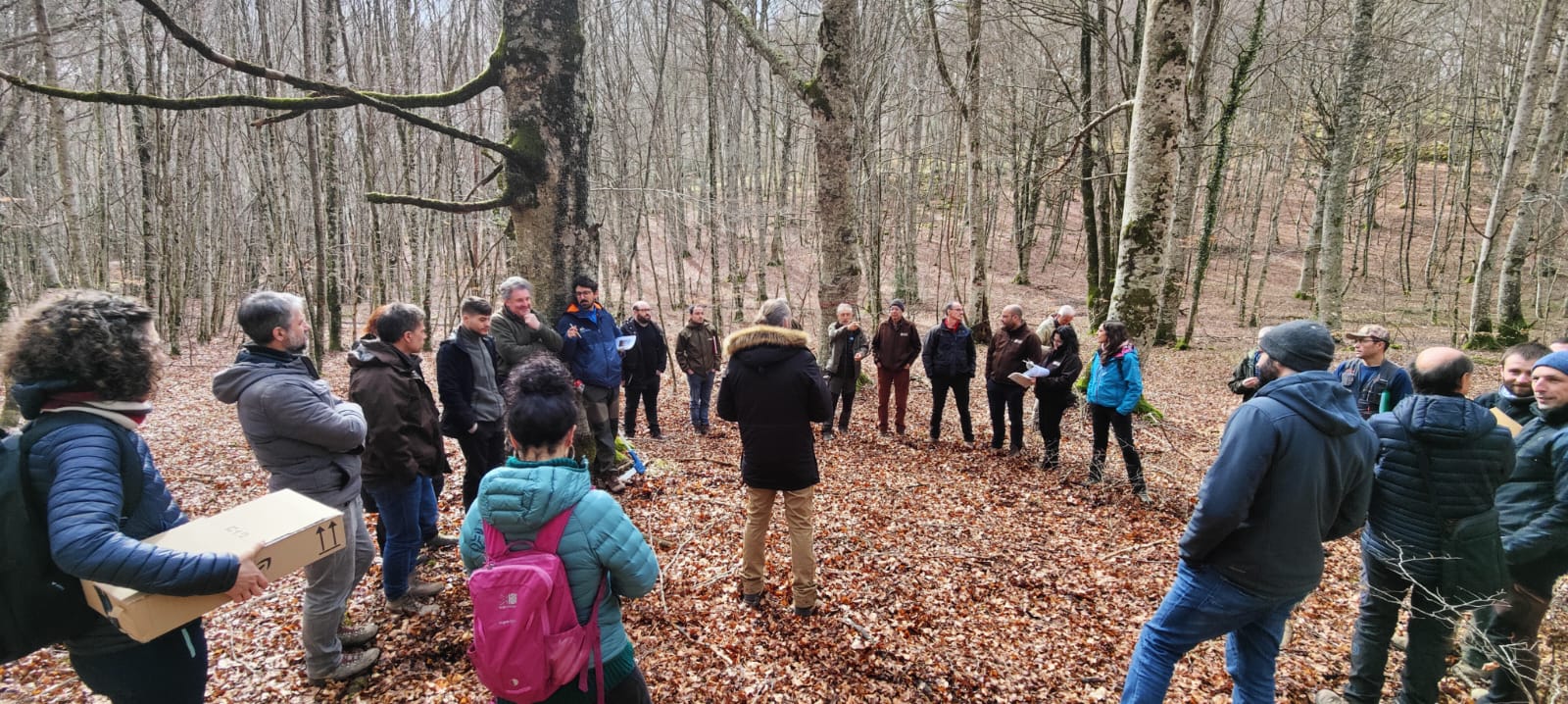
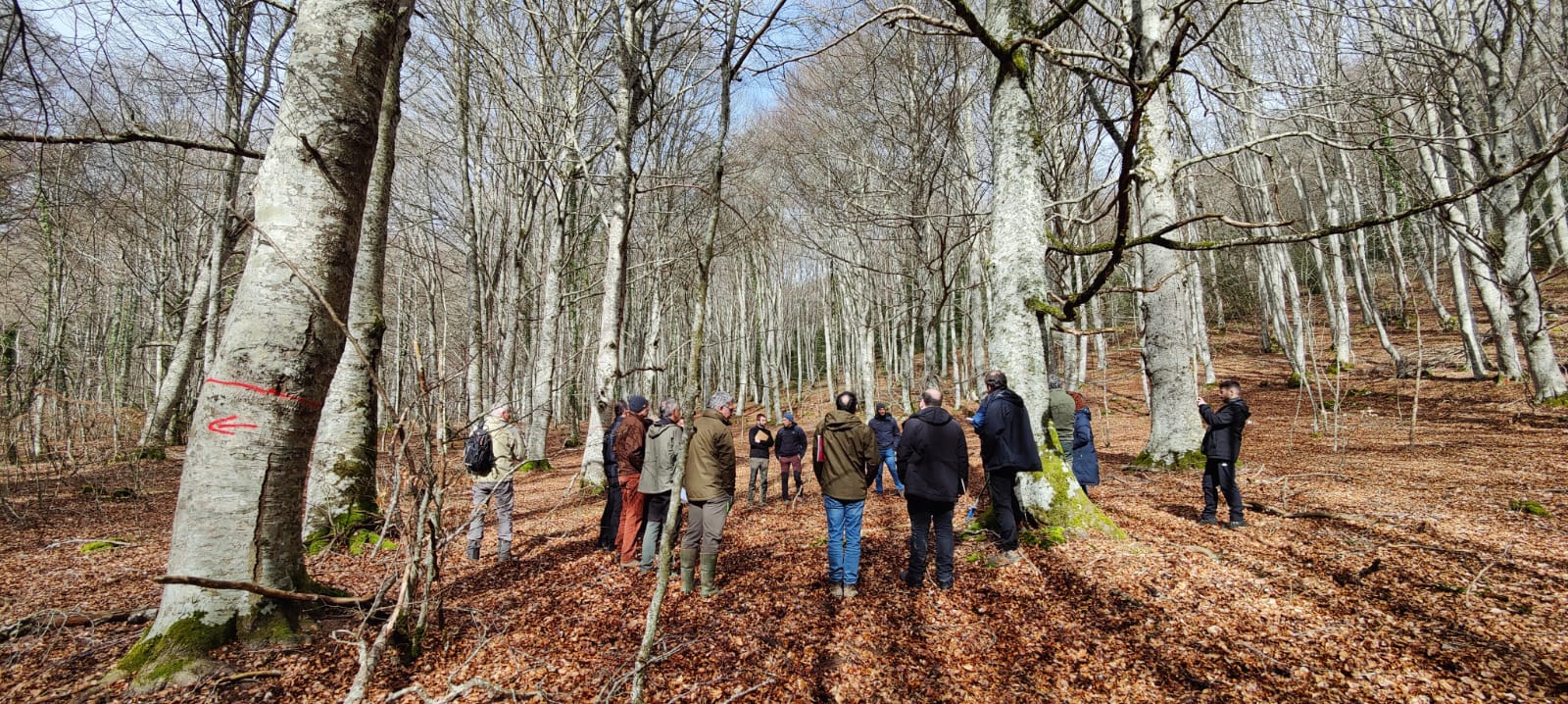
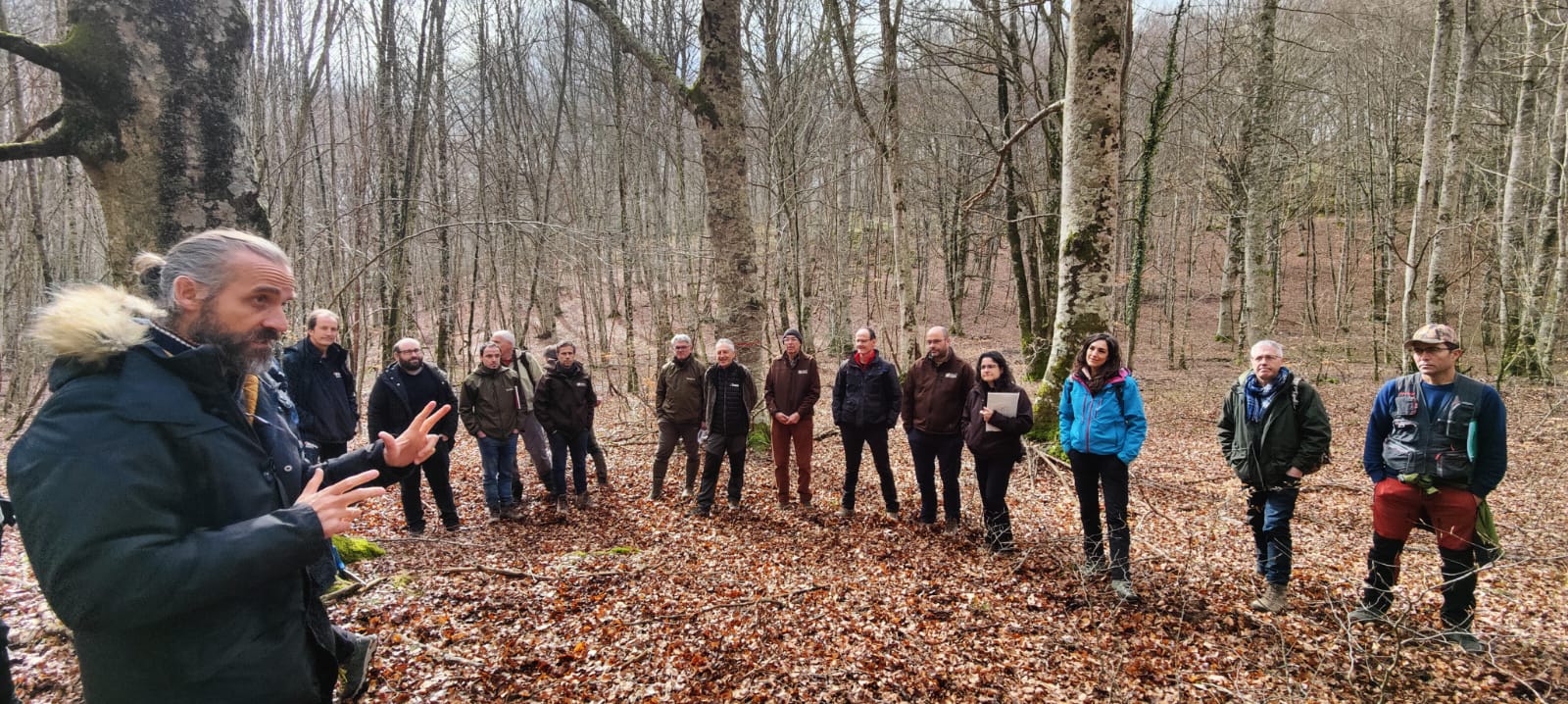
During this productive meeting, the participants reached conclusions focused on 3 areas:
1. BIOECONOMICS
- In this respect, they concluded that new technologies for the development of higher added-value wood products from small squares allow a better use of wood, which represents an opportunity for the revaluation of beech forests.
- That the use of some of this smaller squareness and lower grades of wood for secondary processing products would provide an opportunity to improve carbon balances, sequestering carbon for an extended period of time and thus contributing to the fight against climate change.
- It is important for the whole value chain, including the end customer, to certify the sustainable origin of the wood.
2. FORESTRY AND HARVESTING
- In this respect, the experts’ conclusions recommended a Prosilva forestry, in which the most important principles of close-to-nature forestry procedures are applied. Therefore, it would be optimal to carry out more frequent interventions in the beech forests (with a periodicity of 7-10 years).
- In this respect, the management capacity of the utilisation companies must be assessed in order to be able to intervene with this frequency of time.
- In this respect, there is room for improvement with the outsourcing of certain services and with more training in the sector.
- Greater technification of wood processing companies would ensure greater motivation, training and better working conditions for forestry workers, which would generally have an impact on their skills.
- In general, the use of processing machines has less impact on the forest and, as a result, the natural environment of beech forests is better preserved.
3. INDUSTRY AND UTILISATION
- A very large part of hardwood, including beech, is currently used for fuelwood, but most of it has been shown to have the structural quality required for the further processing industry (e.g. MLE and CLT).
- There is a problem with trees with a diameter of more than 25cm when it comes to second transformation due to the high cost of cutting them. However, in terms of quality, they represent an opportunity with new products (MLE and CLT) that are beginning to admit certain defects and some markets are even beginning to demand the red heart in beech wood.
